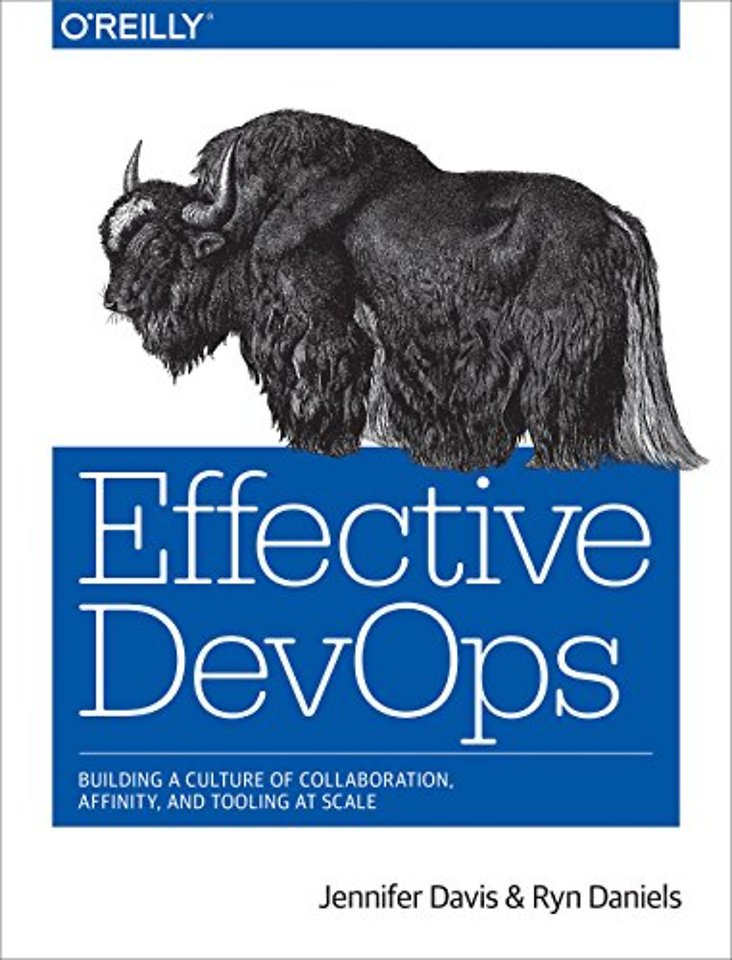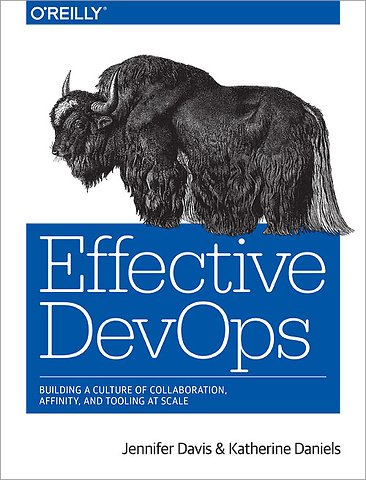


Jennifer Davis is a global organizer for devopsdays and a local organizer for devopsdays Silicon Valley, and the founder of Coffeeops.
Meer over de auteursEffective DevOps
Building a Culture of Collaboration, Affinity, and Tooling at Scale
Samenvatting
Some companies think that adopting devops means bringing in specialists or a host of new tools. With this practical guide, you’ll learn why devops is a professional and cultural movement that calls for change from inside your organization. Authors Katherine Daniels and Jennifer Davis provide several approaches for improving collaboration within teams, creating affinity among teams, promoting efficient tool usage in your company, and scaling up what works throughout your organization’s inflection points.
Devops stresses iterative efforts to break down information silos, monitor relationships, and repair misunderstandings that arise between and within teams in your organization. By applying the actionable strategies in this book, you can make sustainable changes in your environment regardless of your level within your organization.
- Explore the foundations of devops and learn the four pillars of effective devops
- Encourage collaboration to help individuals work together and build durable and long-lasting relationships
- Create affinity among teams while balancing differing goals or metrics
- Accelerate cultural direction by selecting tools and workflows that complement your organization
- Troubleshoot common problems and misunderstandings that can arise throughout the organizational lifecycle
- Learn from case studies from organizations and individuals to help inform your own devops journey
Specificaties
Over Katherine Daniels
Inhoudsopgave
Part 1: What Is Devops?
1. The Big Picture
-A Snapshot of Devops Culture
-The Evolution of Culture
-The Value of the Story
-Katherine’s Story
-Jennifer’s Story
-Illustrating Devops with Stories
2. What Is Devops?
-A Prescription for Culture
-The Devops Equation
3. A History of Devops
-Developer as Operator
-The Advent of Software Engineering
-The Advent of Proprietary Software and Standardization
-The Age of the Network
-The Beginnings of a Global Community
-The Age of Applications and the Web
-The Growth of Software Development Methodologies
-Open Source Software, Proprietary Services
-Agile Infrastructure
-The Beginning of devopsdays
-The Current State of Devops
-Summary
4. Foundational Terminology and Concepts
-Software Development Methodologies
-Operations Methodologies
-Systems Methodologies
-Development, Release, and Deployment Concepts
-Infrastructure Concepts
-Cultural Concepts
-Summary
5. Devops Misconceptions and Anti-Patterns
-Common Devops Misconceptions
-Devops Anti-Patterns
-Summary
6. The Four Pillars of Effective Devops
-Collaboration
-Affinity
-Tools
-Scaling
-Summary
Part 2: Collaboration
7. Collaboration: Individuals Working Together
-Sparkle Corp Weekly Planning Meeting
-Defining Collaboration
-Individual Differences and Backgrounds
-Opportunities for Competitive Advantage
-Mentorship
-Introducing Mindsets
-Mindsets and Learning Organizations
-The Role of Feedback
-Reviews and Rankings
-Communication and Conflict Resolution Styles
-Empathy and Trust
-Humane Staffing and Resources
-Effective Collaboration with Sparkle Corp
-Summary
8. Collaboration: Misconceptions and Troubleshooting
-Collaboration Misconceptions
-Collaboration Troubleshooting
Part 3: Affinity
9. Affinity: From Individuals to Teams
-Sparkle Corp Development Demo Day
-People Networks
-What Makes a Team?
-Teams and Organizational Structure
-Finding Common Ground Between Teams
-Case Study: United States Patent and Trademark Office
-Benefits of Improved Affinity
-Requirements for Affinity
-Measuring Affinity
-Sparkle Corp Dev and Ops Affinity
-Summary
10. Affinity: Misconceptions and Troubleshooting
-Affinity Misconceptions
-Affinity Troubleshooting
Part 4: Tools
11. Tools: Ecosystem Overview
-Software Development
-Automation
-Monitoring
-Evolution of the Ecosystem
-Summary
12. Tools: Accelerators of Culture
-The Value of Tools to People
-What Are Tools?
-The Right Tools for Real Problems
-Embracing Open Source
-Standardization of Tools
-Consistent Processes for Tool Analysis
-Exceptions to Standardization
-Irrelevance of Tools
-The Impacts of Tools on Culture
-Selection of Tools
-Auditing Your Tool Ecosystem
-Elimination of Tools
-Case Studies
-Examining DramaFever
-Examining Etsy
-Motivations and Decision-Making Challenges
-Sparkle Corp Effective Tool Usage
-Summary
13. Tools: Misconceptions and Troubleshooting
-Tools Misconceptions
-Tools Troubleshooting
Part 5: Scaling
14. Scaling: Inflection Points
-Understanding Scaling
-Considering Enterprise Devops
-Organizational Structure
-Team Flexibility
-Organizational Lifecycle
-Complexity and Change
-Scaling for Teams
-Case Studies: Growing and Scaling Teams
-Team Scaling and Growth Strategies
-Scaling for Organizations
-Case Study: Government Digital Service, GOV.UK
-Case Study: Target
-Examining Target
-Summary
15. Scaling: Misconceptions and Troubleshooting
-Scaling Misconceptions
-Scaling Troubleshooting
-We Don’t Know If We Need a Full Team for X
Part 6: Bridging Devops Cultures
16. Building Bridges with the Four Pillars of Effective Devops
-The Significance of Stories
-Devops in Theory and in Practice
-Summary
17. Bridging Devops Cultures: Learning from Our Stories
-What Stories Can Teach Us About Culture
-Interorganizational Interactions
-Encouraging Interorganizational Affinity
-Summary
18. Bridging Devops Cultures: Fostering Human Connections
-Individual Stories and Narratives around Work
-Cultural Debt
-The Health of Systems
-Summary
19. Conclusion
-Your Next Steps
-Creating Effective Devops
20. Further Resources
Index





